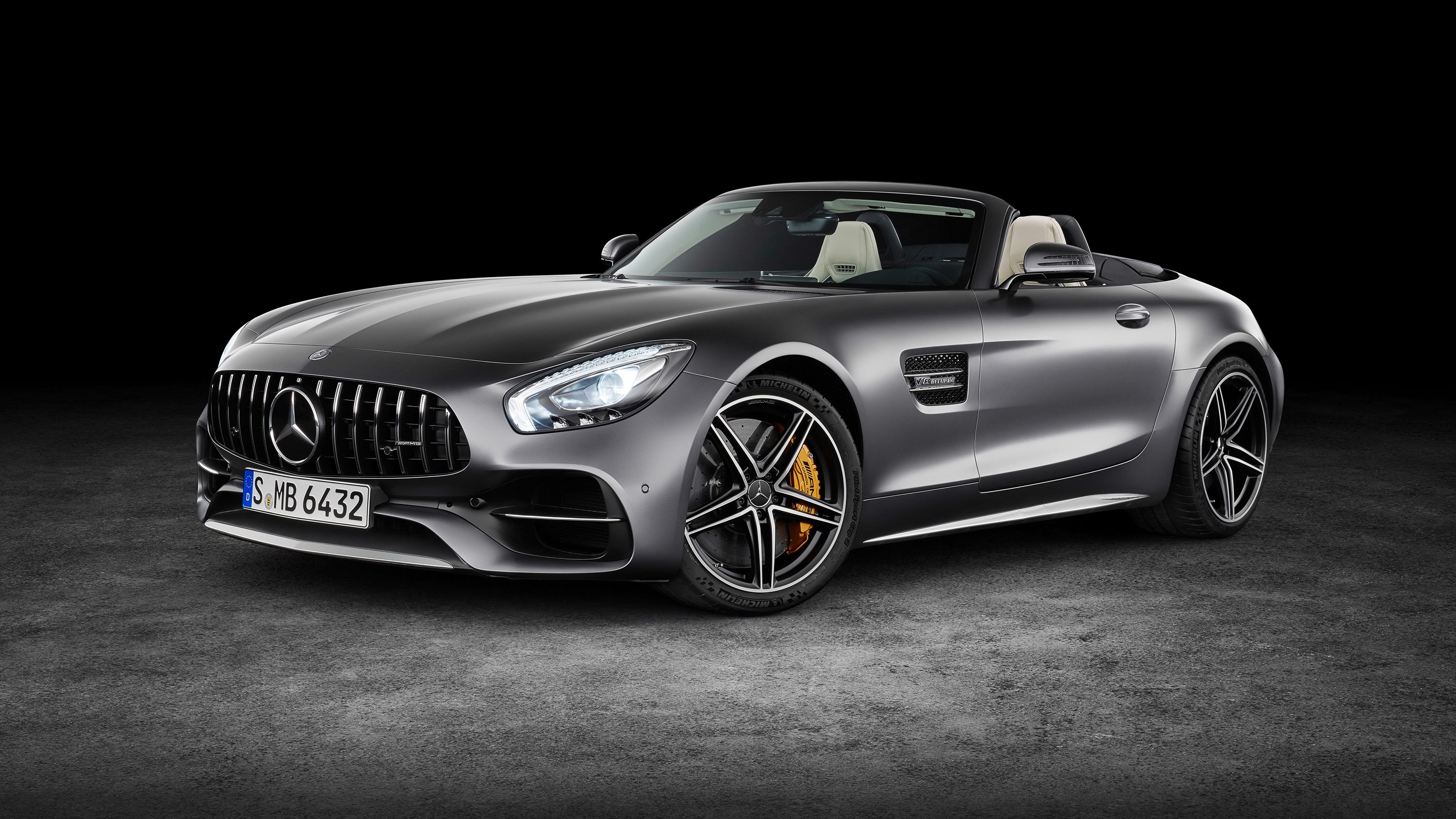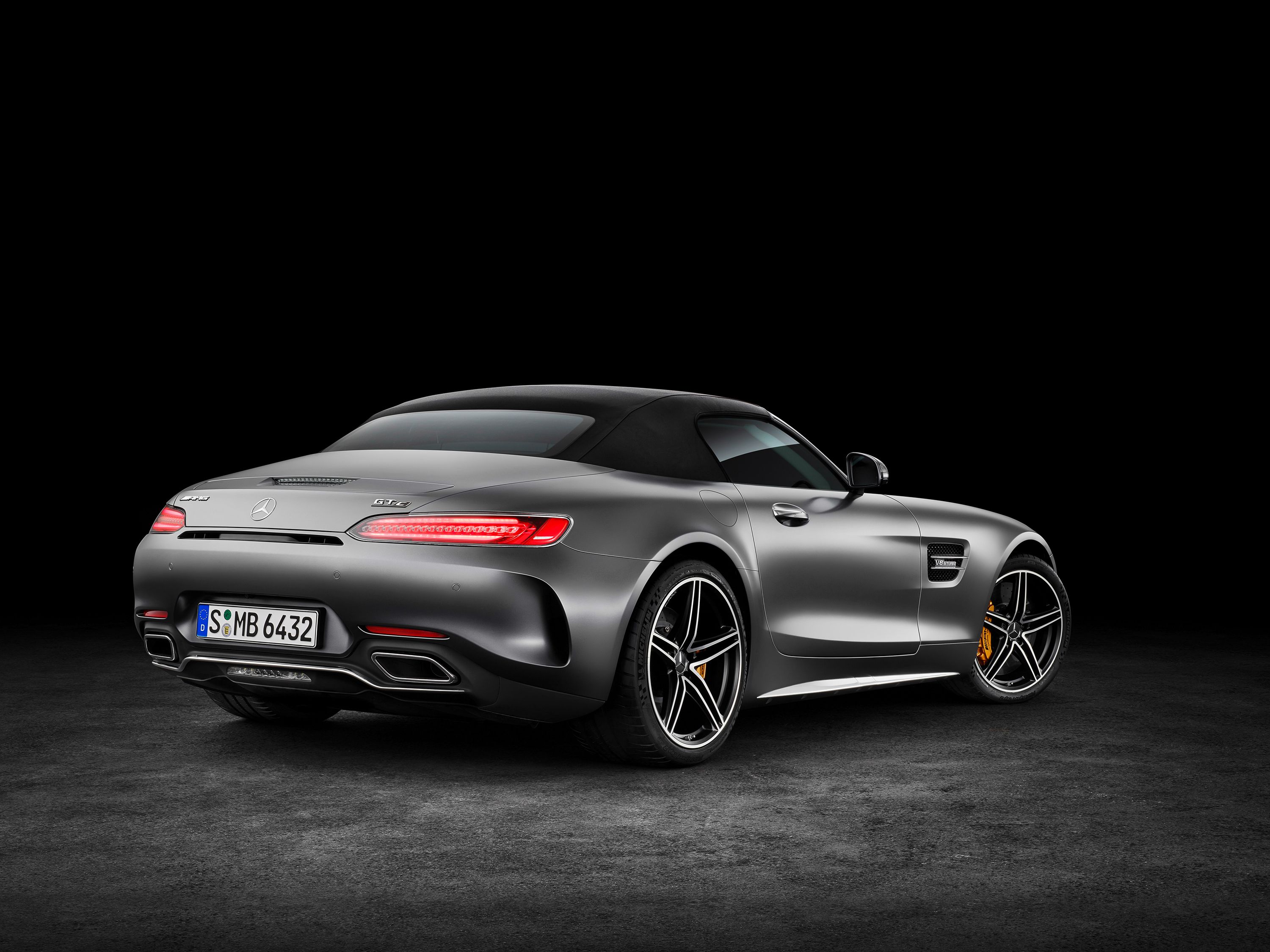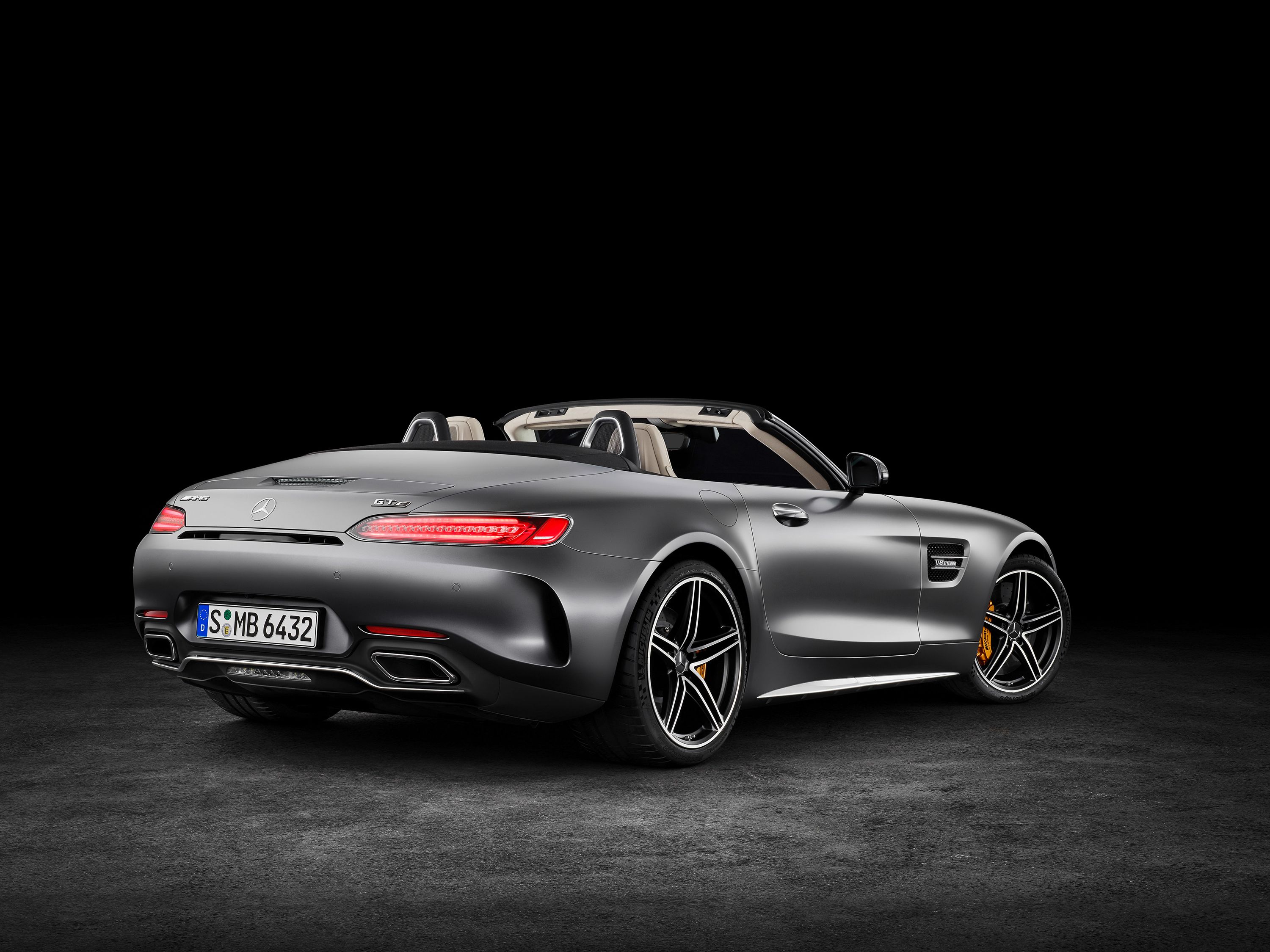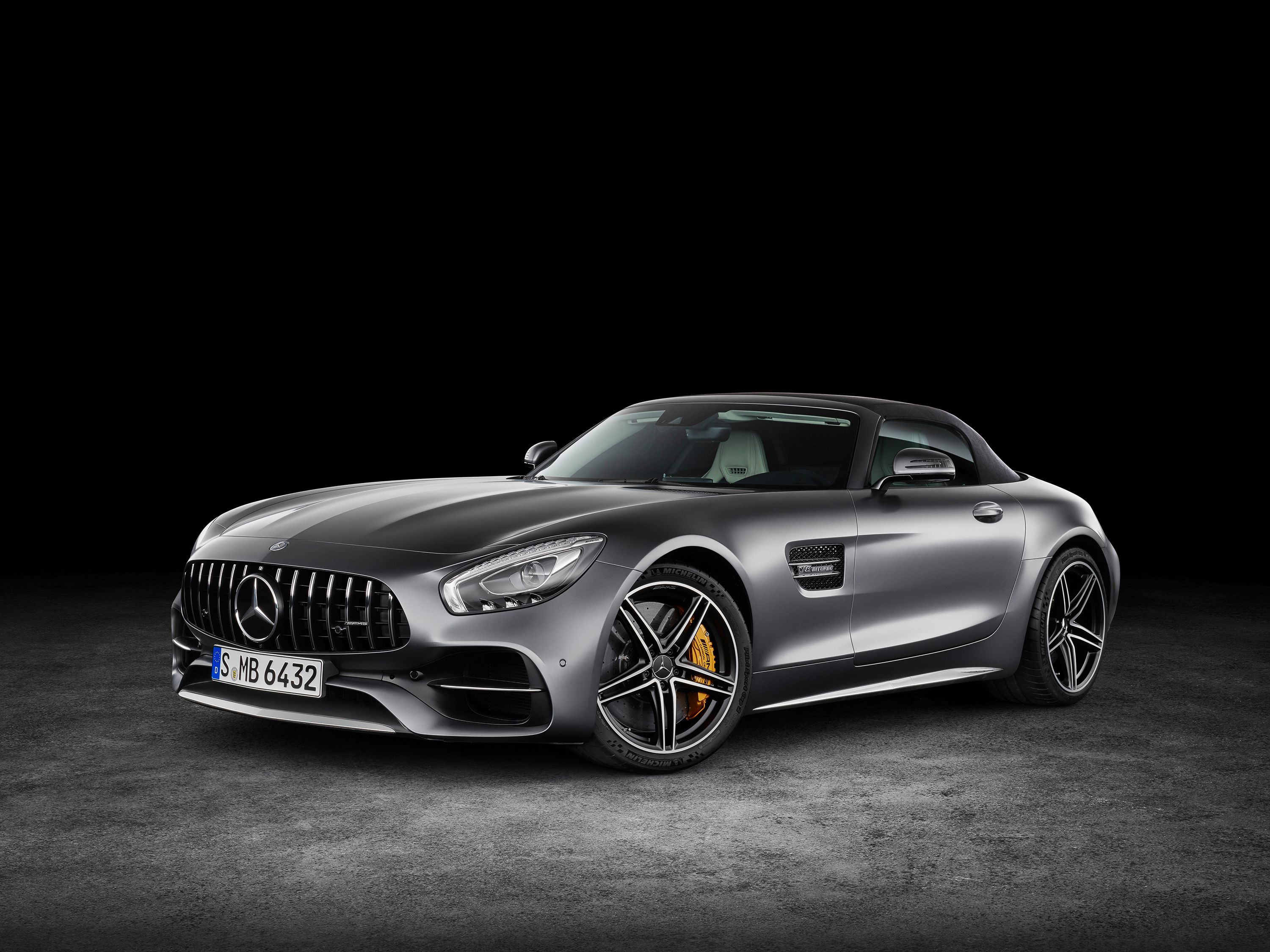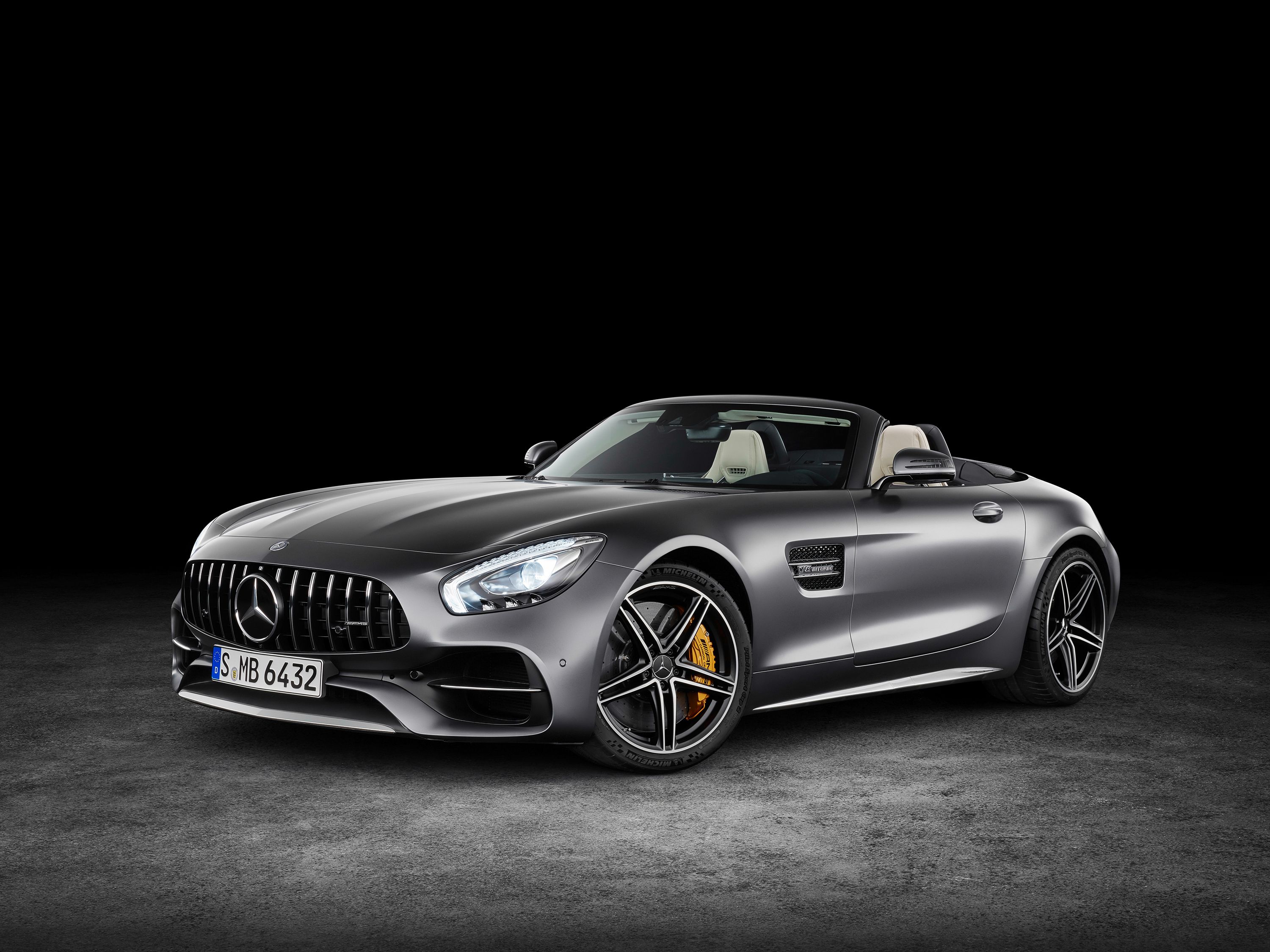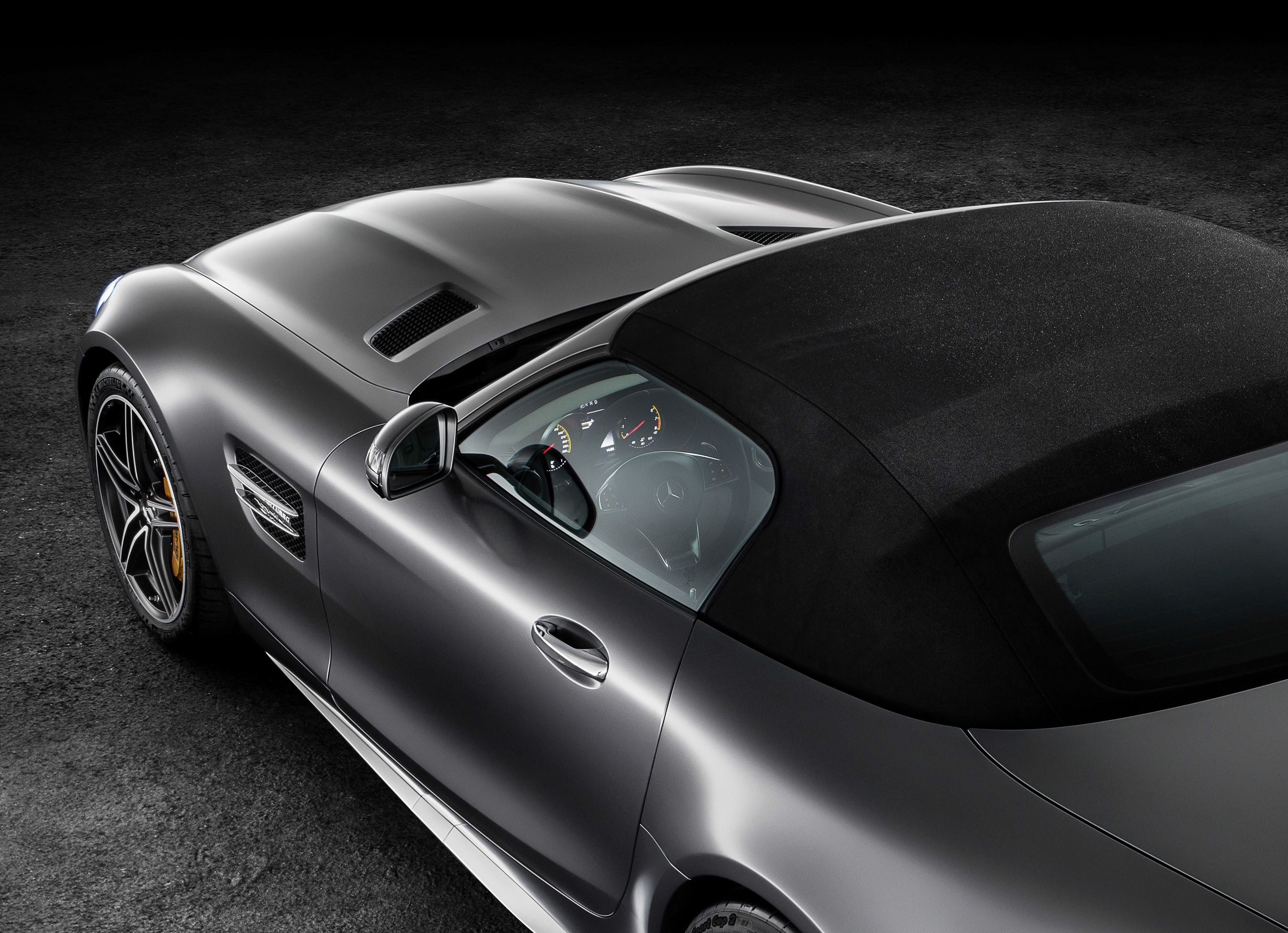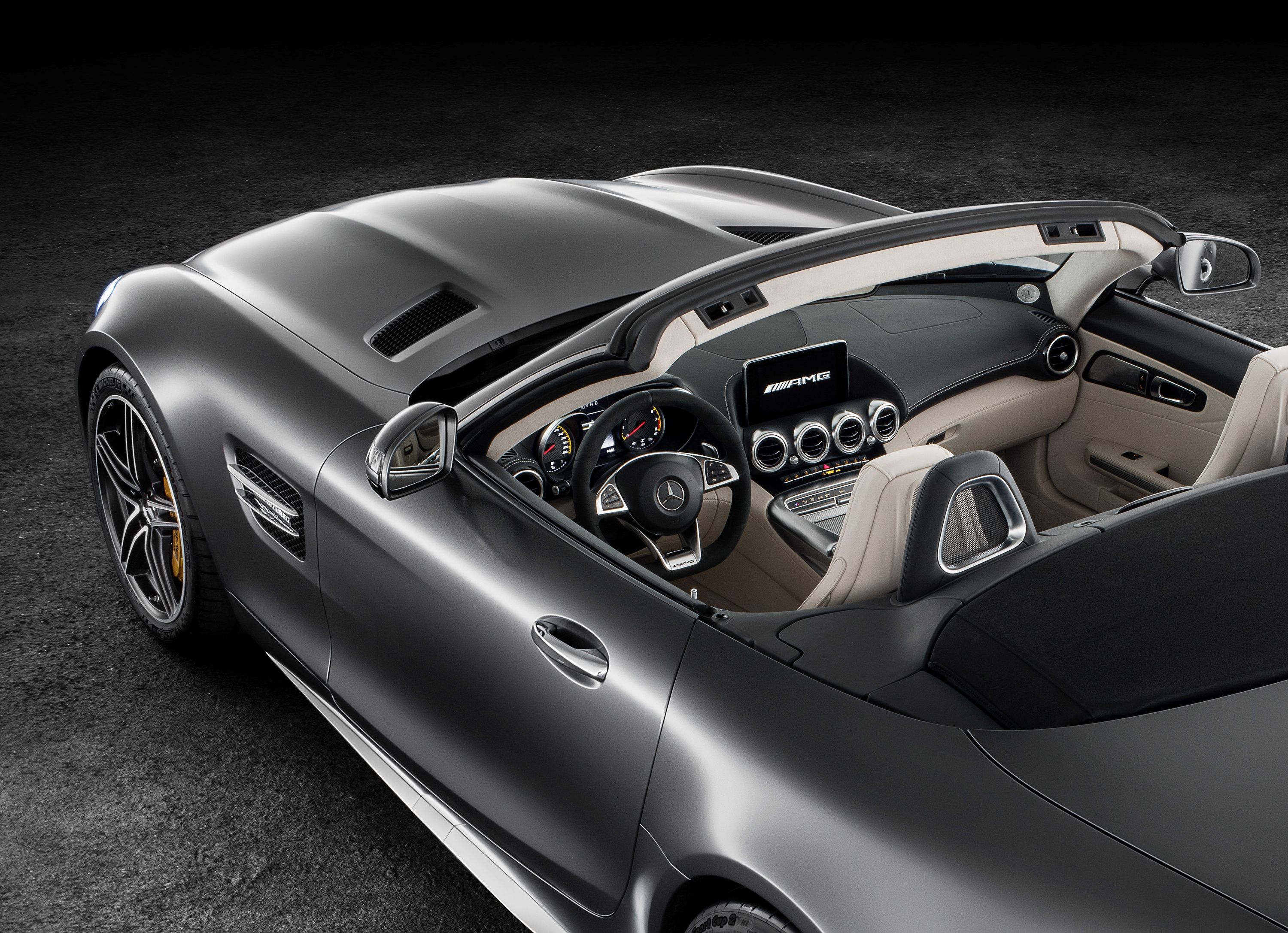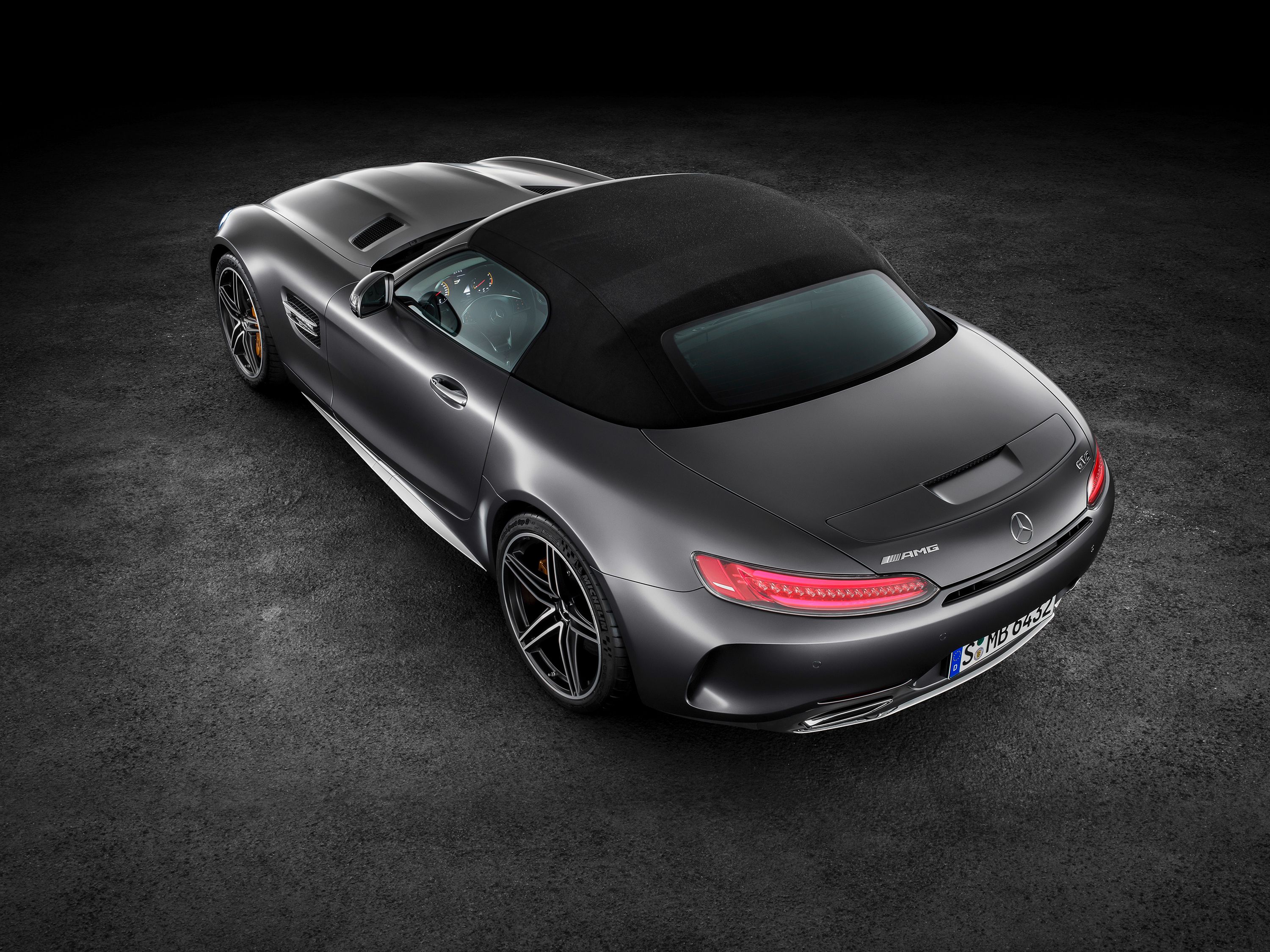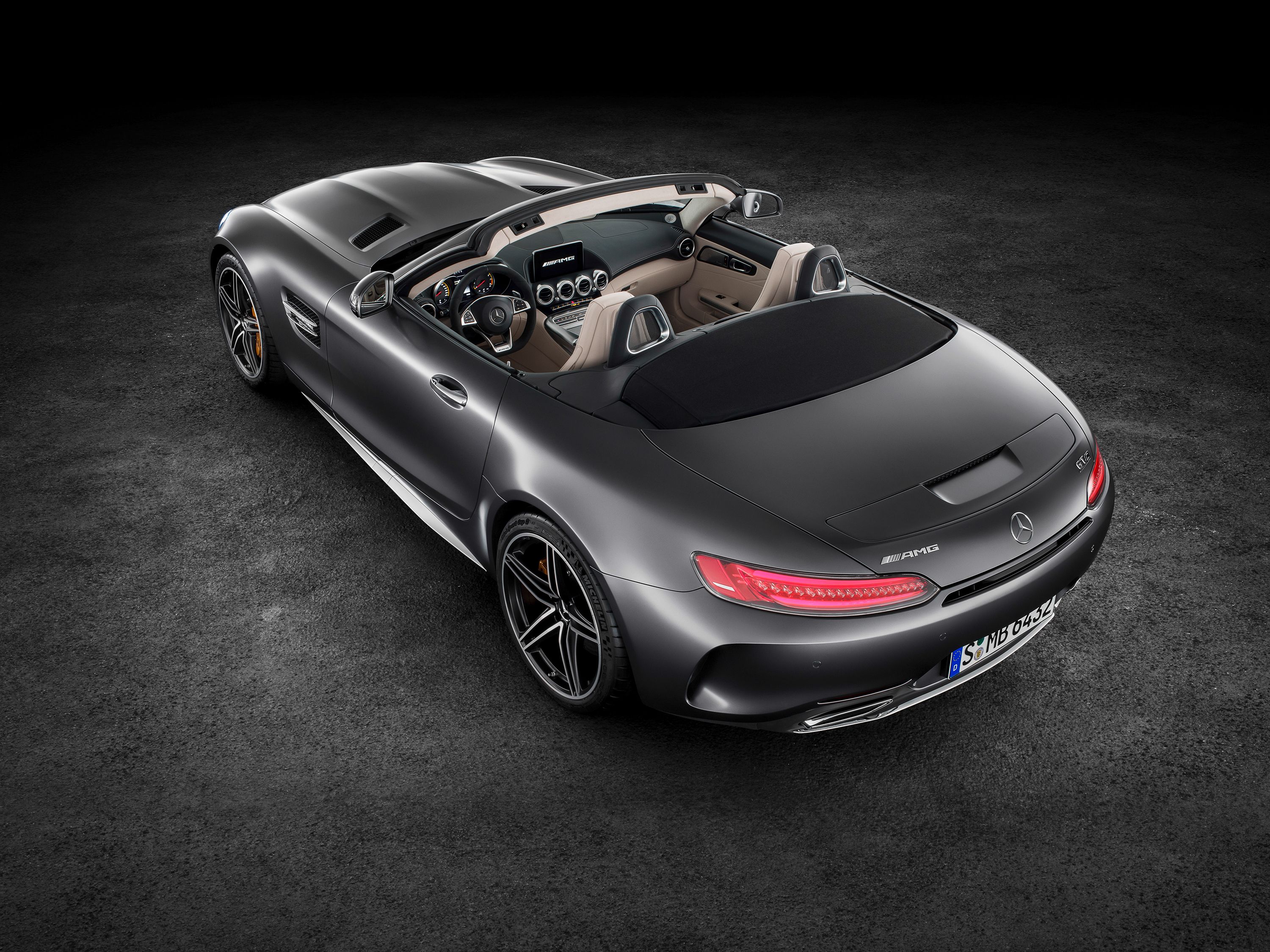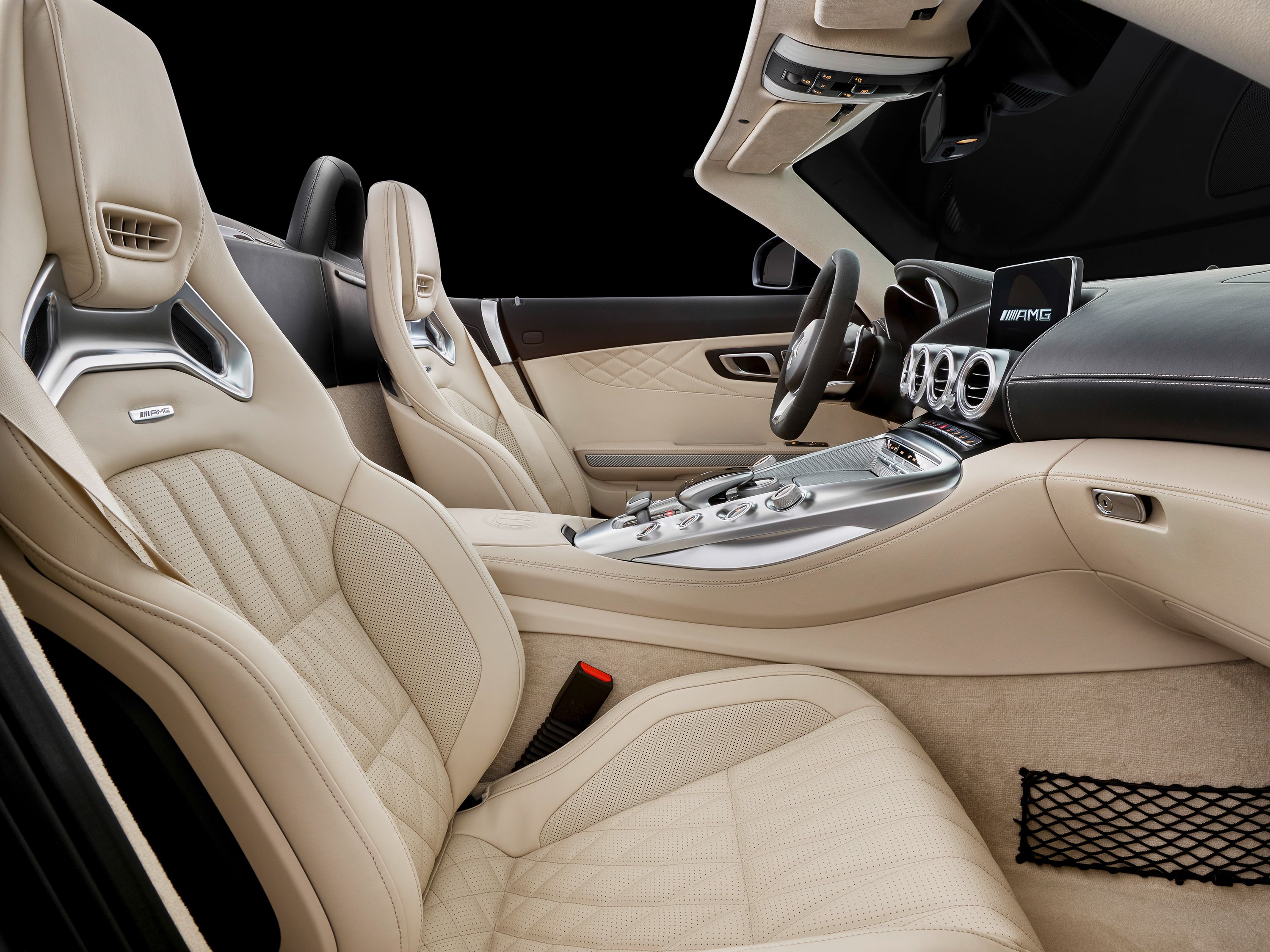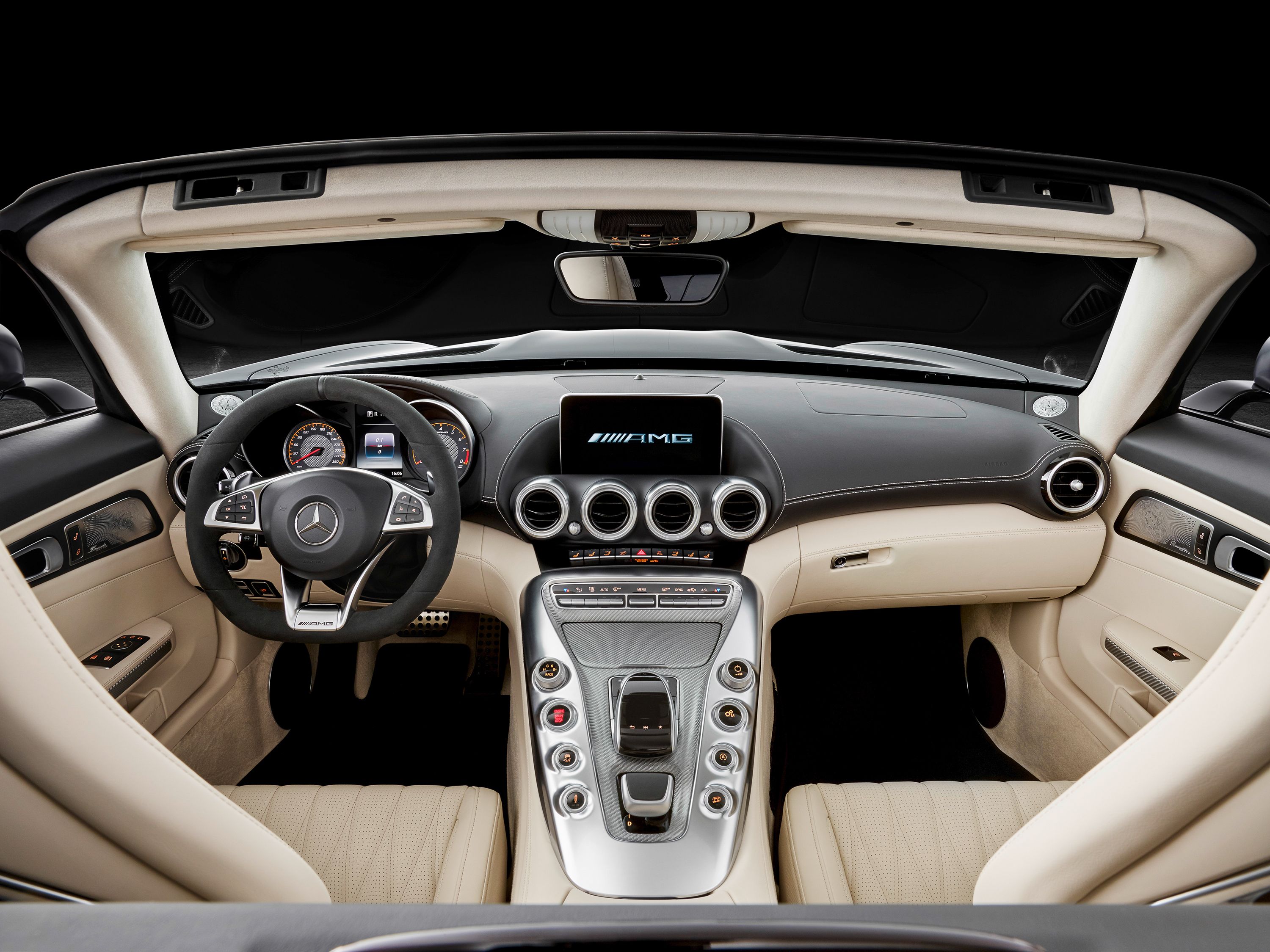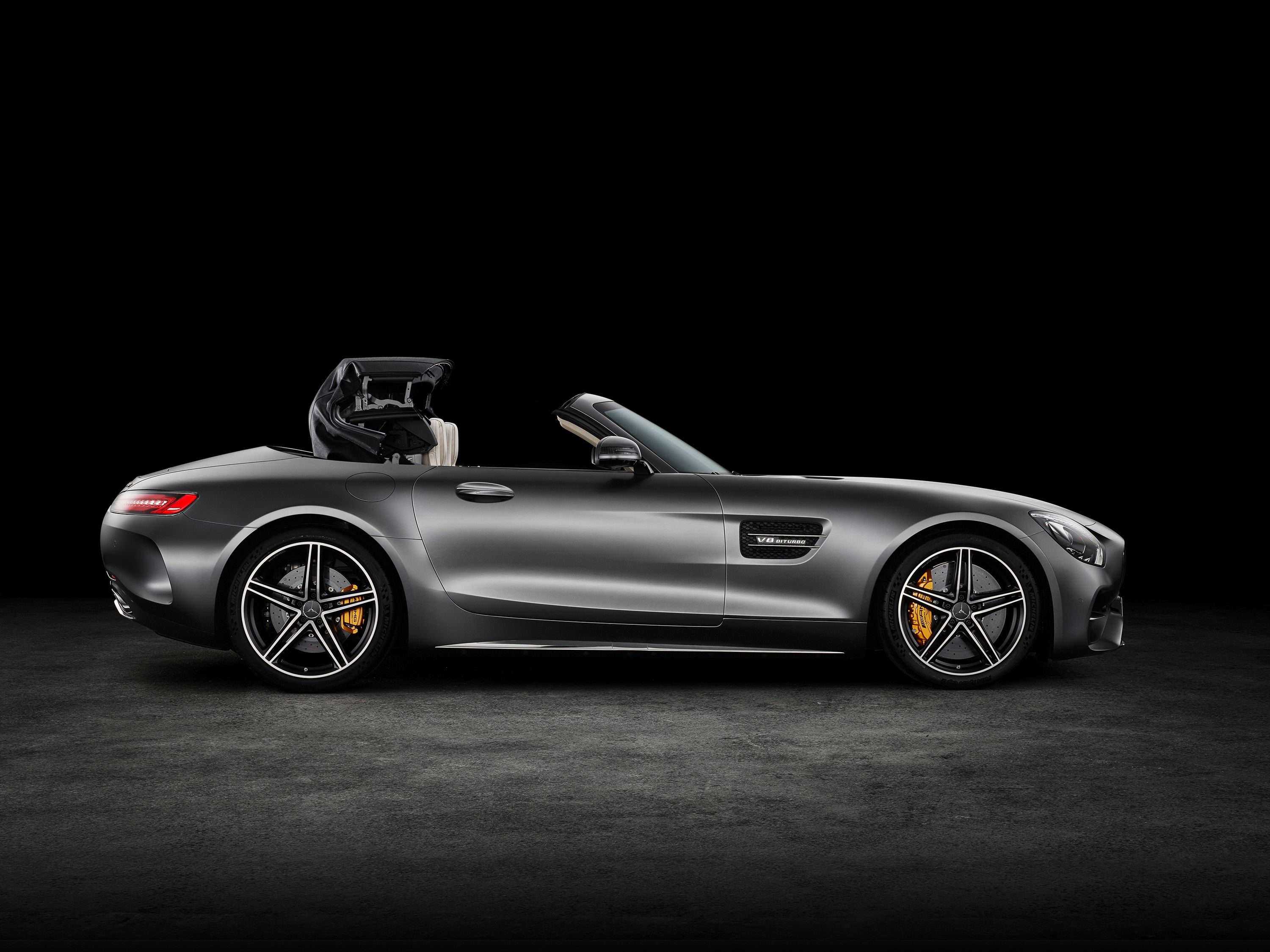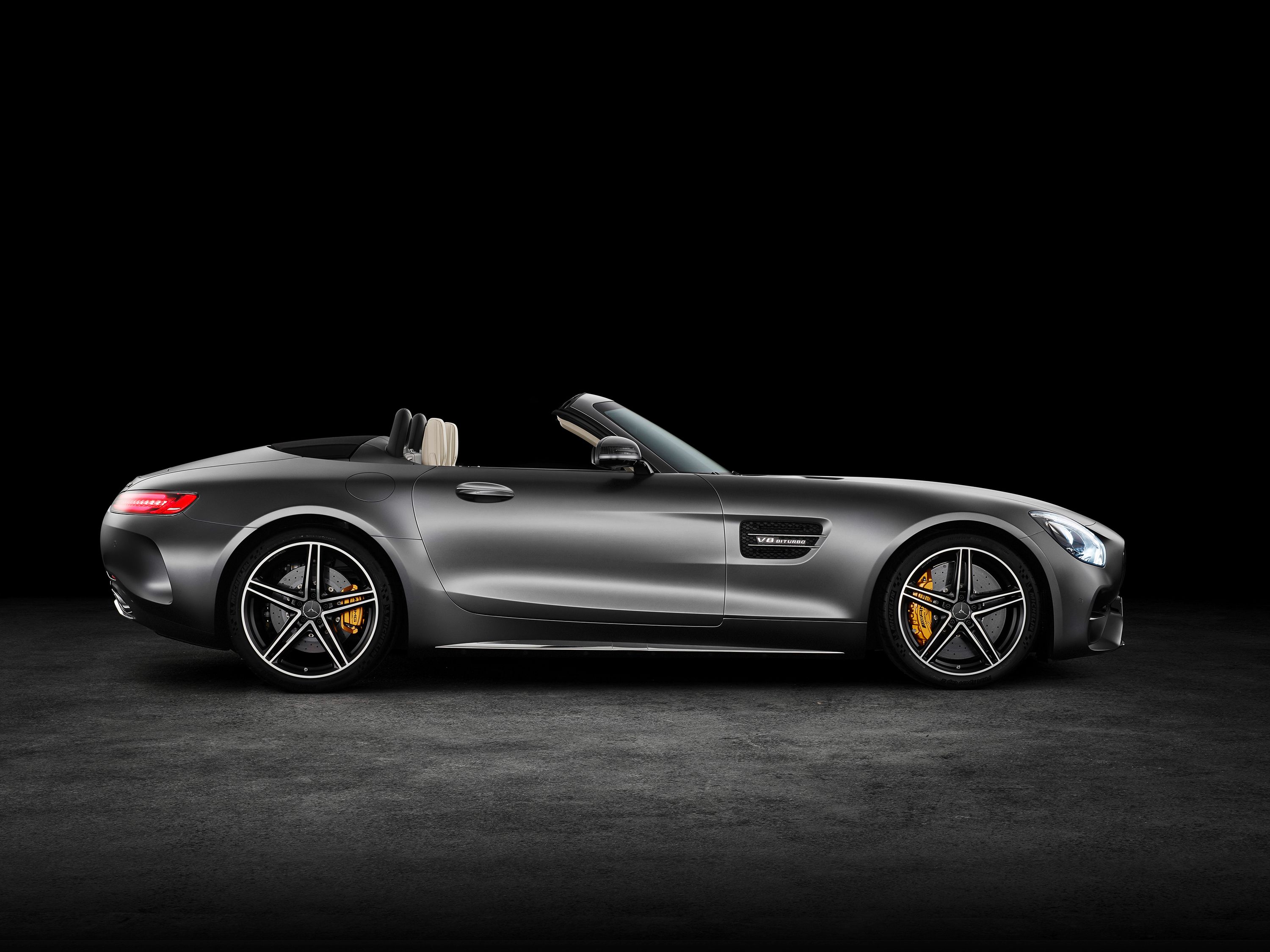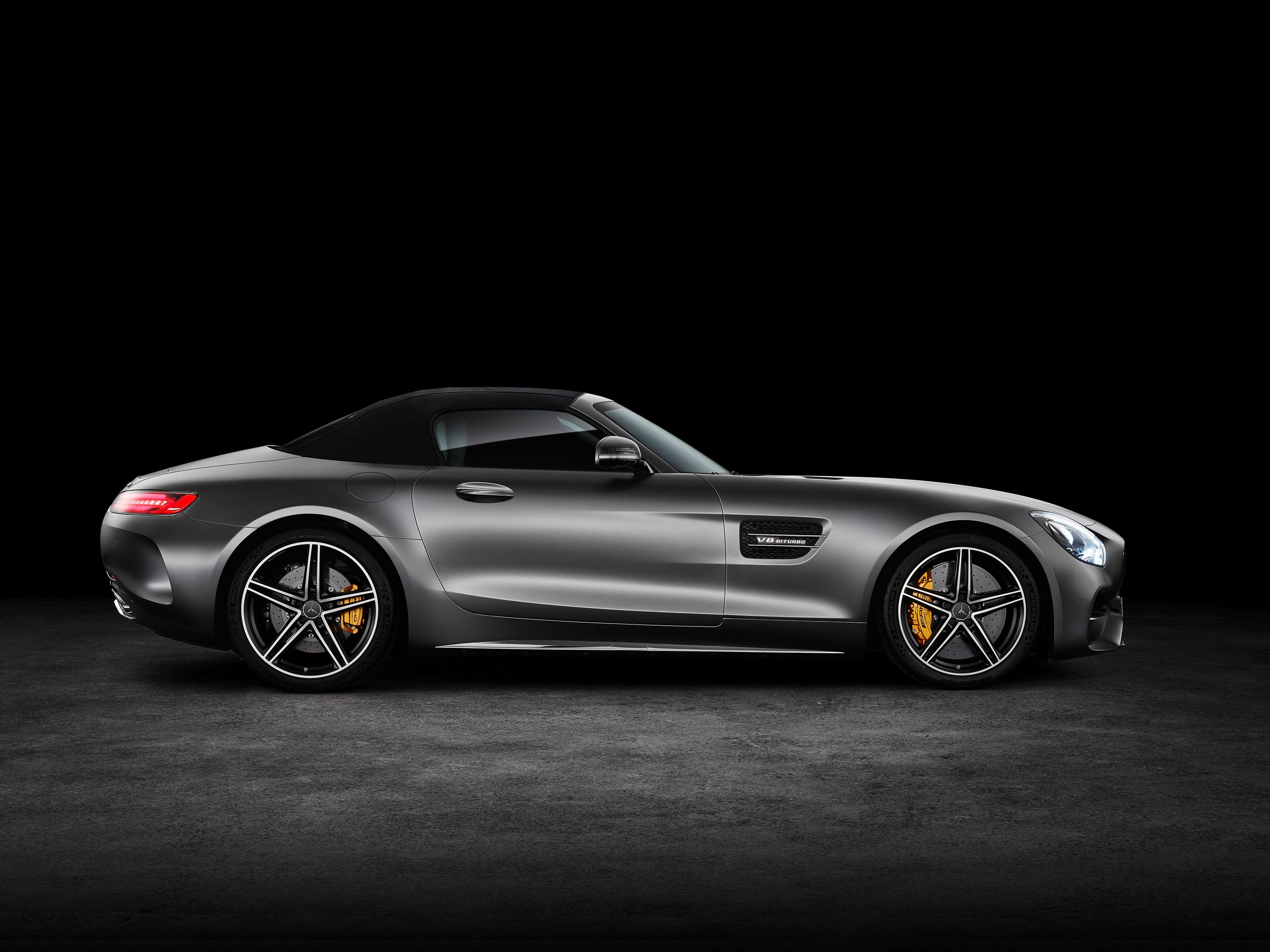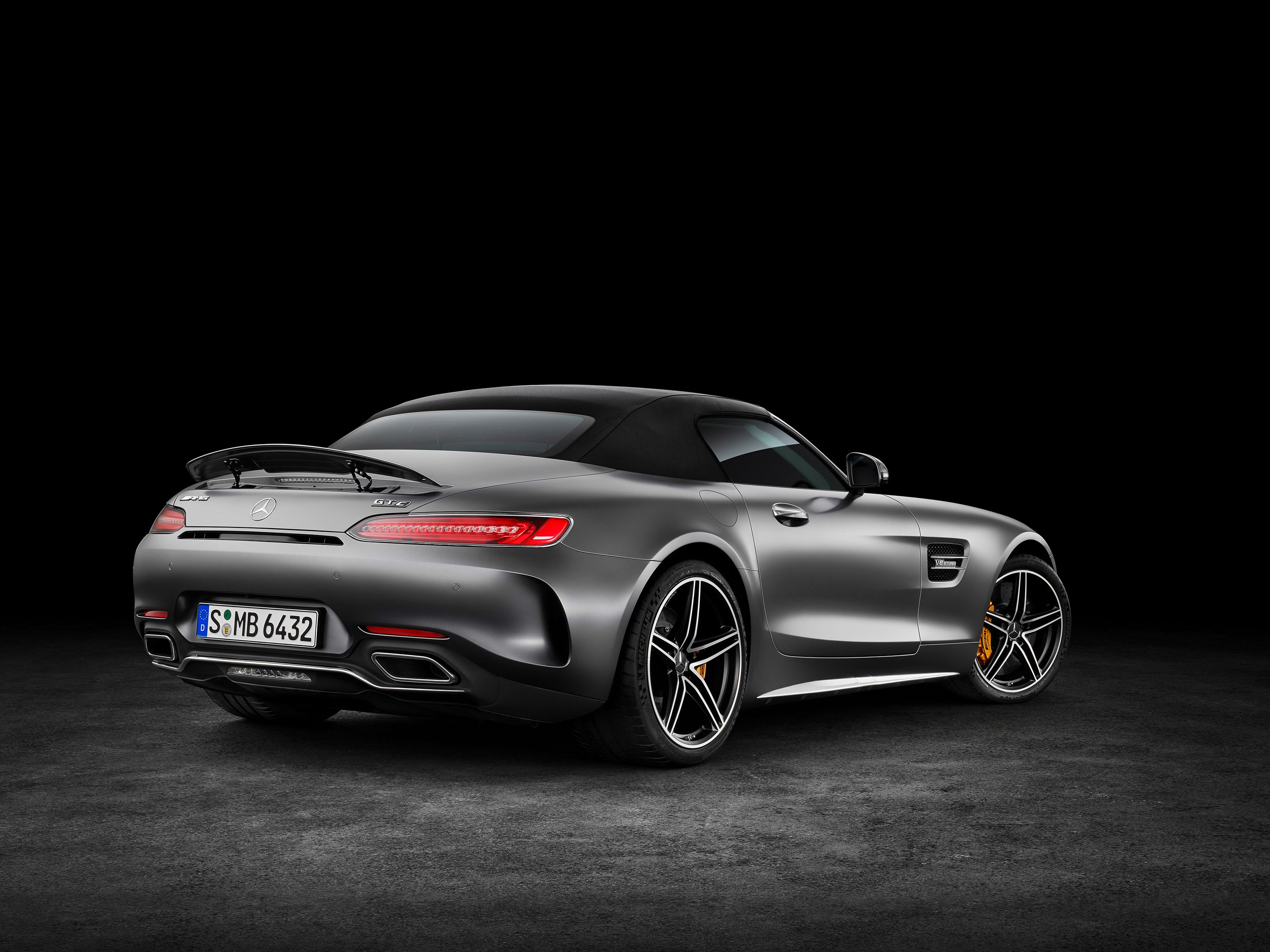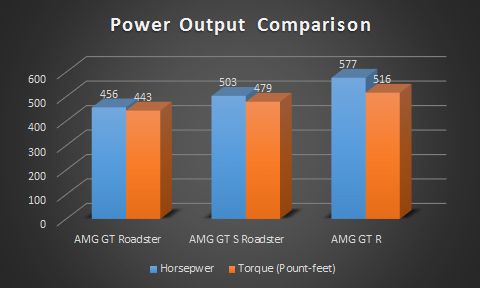The Mercedes-AMG GT wasn’t only the successor to the Mercedes SLS AMG; it was also the first model to sport a Mercedes-AMG badge and the first model that got your blood pumping with that 4.0-liter V-8. It was a bit smaller than the SLS, so it targeted a completely different market of buyers, but it was still quite Amazing. And, despite the rumors that Mercedes wasn’t going to make a roadster variant of the GT, we’ve finally been graced with not one but two. The one you see here is the range-topping model and goes by the name GT C. The best part is that it’s a lot more than a GT coupe with its top chopped off. See, this baby takes on its own look and even gets some extra horsepower to go with it.
Now, don’t get it twisted, the rumors that Mercedes wasn’t going to make a roadster were pretty much dismissed when earlier this year when we got spy shots of a drop-top testing in the wild. So, we knew that one would eventually make its long-awaited debut. But, we didn’t know that we were going to get two different models. With that said, let’s dive on in a take a good look at the amazing Mercedes-AMG GT C Roadster.
Continue reading to learn more about the 2017 Mercedes-AMG GT C Roadster.
2018 Mercedes-AMG GT C Roadster
- Make: Array
- Model: 2018 Mercedes-AMG GT C Roadster
- Engine/Motor: V8
- Horsepower: 550
- Torque: 502
- [do not use] Vehicle Model: Array
Exterior
Compared to the coupe, the GT C takes on its special look in a couple of different ways. The side profile below the beltline is nearly identical to that of the coupe. However, above the belt line, especially in the rear, there is some new design work. First off, the convertible top doesn’t take on the fastback look of the coup. Because of this, the rear deck lid is now considerably longer. It still as a slight grade to it that helps to enhance the cars overall sporty look. Between the taillights, it becomes obvious that the decklid doesn’t extend as far down the rear, and there is now a vent of sorts between the decklid and the rear fascia. The rear fascia also takes on a different look with an air vent in each corner. Instead of having a black, diffuser like insert outlined by the rear fascia, the rear fascia itself in actually taller now, with the area around the integrated exhaust outlets finished in the same color as the car.
More changes come to life up front where the roadster has a very dominating front grille with vertical slats and a big fat Mercedes emblem right in the middle. Down below, there is a horizontal slat in each corner intake and the traditional AMG styling to the lower spoiler area of the fascia. But, let’s talk about that soft top for a moment. It can be opened or closed at speeds of up to 31 mph and takes about 11 seconds to complete the transition. It can be hand in either black, red, or beige and is supported by a structure that is composed of magnesium, steel, and aluminum. There’s also an integrated aluminum cross-member and rollover bars for added protection should things get a little to skunk and the car lands belly up.
Outside of the things I’ve mentioned here, the GT C roadster is every bit an AMG GT as the rest of the clan. It features a sporty and muscular hood and those sharp but wild character lines on each side. The rear fenders appear to be flared out a bit like that of the Mercedes-AMG GT R, giving the car a more commanding stance. In short, it’s sexy all the way around and worth of a spot in any man’s garage.
Interior
Inside, the GT C Roadster gets the same amazing interior as the GT Coupe that brings the feeling of width while keeping an aviation-inspired theme. Perched on top of the dash you’ll find that tablet-like infotainment screen that is flanked on the left by a two-gauge instrument cluster with a TFT screen in the middle. As is the usual treatment with AMG-branded vehicles, the driver is in control with a flat-bottom steering wheel that also has a small mark at 12 o’clock. Three spoke in design; there are thumb buttons on each side spoke while the bottom spoke is wide open in the middle. Sitting below the infotainment screen are four circular vents that are about two-thirds of the size of the vent on each corner of the dash.
The two-tone nature of the dash matches that of the door trims. In this specific example, the top of the dash and door panels are black while the bottom of the dash and trim are a cream color. The center console sits nice and high, effectively giving the driver and passenger their own space. The silver insert atop the console adds a lot of character here with the AMG Drive Unit controls arranged as if they are cylinders in a V-8 engine. All told, the cabin is sleek, sexy, and inviting. It’s very well put together and has exception fit and fishing all the way around.
Drivetrain
And here’s where every man that has a need for speed starts to get excited. Under that long hood, you’ll find a hand-built 4.0-liter, Biturbo, V-8 engine. However, unlike the engine found in other GT models, this baby pumps out 550 horsepower and 502 pound-feet of torque. To help paint a clear picture, that’s 94 horsepower more than the GT Roadster, 47 horsepower more than what’s offered in the AMG GT S and just 27 horsepower less than what you get in the AMG GT R. With immediate response and a wide powerband that delivers maximum torque between 1,900 and 5,750 rpm, the GT C roadster can break the 60 mph barrier in 3.7 seconds on the way to a butthole-puckering top speed of 196 mph.
But, that’s not all that’s interesting here. The dual-clutch transmission that sends power to the rear wheels is positioned in a transverse layout at the rear axle and has been updated with new hardware and software to compensate for all that extra power -- just like the rear end found in the GT R. Offering up seven speeds, the first gear now has a higher ratio while the last gear and final drive have a lower ratio. This makes the car much more responsive on the fly and surely a pleasure when you really get on it.
The GT C Roadster also gets the traditional AMG Drive Select, that includes models like “comfort” and “sport,” but the GT C comes available with a new mode known as “race.” This mode alters the tuning of the transmission even further to meet the quick shifting needs required for a fun day at the track. It brings exceptionally fast shift speeds while opening up the exhaust to provide even more emotion from the rear. Manual mode can be selected that will allow you to shift the transmission yourself because, I mean honestly, who really wants to let a car shift itself at the track? Not me. On top of this, the GT C also gets the AMG Sport Suspension along with AMG Ride Control, making this thing an absolute dream to drive during more extreme maneuvers. Furthermore, there’s also rear-wheel steering borrowed from the GT R to help improve not only agility but stability too.
But wait, there’s more. The standard GT Roadster has a mechanical locking differential, but not the GT C. The GT C gets an updated electronically controlled locking differential that is integrated into the transmission. It helps to improve the grip of the rear wheels which ultimately increases the limitation of speed when cornering.
Pricing
Pricing for the AMG GT C Roadster starts from $157,000, a sticker that places it at the top of the Roadster lineup. Compared to the base AMG GT Roadster, it commands a $32,600 premium. It's also exactly $8,000 more expensive than the coupe version of the AMG GT C and just as expensive as the bonkers AMG GT R coupe.
Competition
Read our full review on the Porsche 911 Turbo Cabriolet here.0
With the AMG GT aimed at the Porsche 911 Turbo and the GT Roadster aimed at the 911 Turbo Cabriolet, it’s only fitting that we pit the GT C against the 911 Turbo S Cabriolet. Powered by a 3.8-liter flat-six, the Turbo S delivers 580 horsepower – 30 ponies more than the GT C. With a 60-mph sprint of about 2.8 seconds with the Sport Chrono package and a top speed of 205 mph; the Porsche does have the upper hand in the performance department. But, that’s okay, because the Turbo S Cabriolet is priced at a divorce-induction $200,400. That’s about $60,000 more than the expected price of the GT C. Be that as it may, the 911 is just as elegant inside, and has it owns unique look outside. So, it really boils down to two things when choosing between the Porsche and the GT C – brand loyalty and whether or not it’s worth paying $60,000 extra to hit 60 mph a second faster.
Read our full review on the Porsche 911 Turbo Cabriolet here.
Conclusion
Normally I knock on Mercedes-AMG a little bit because most of the time there’s a lot of the same car with little updates for power or performance – especially when there are multiple versions of the same car. But, in this case, I think Mercedes-AMG really outdid itself. The interior is practically identical to that of the 2016 GT Coupe, but the exterior of the GT C has taken some pretty decent enhancements to make it its own model. That front grille is brilliant and gives the car more of an exotic look while that lightweight and longer decklid adds a lot of character to the rear end. Plus, there’s that soft top that probably would have looked ugly if it maintained the fastback look. What do you think of the new GT C Roadster? Would you buy it if you had an extra $150,000 sitting around? Let us know in the comments below.

